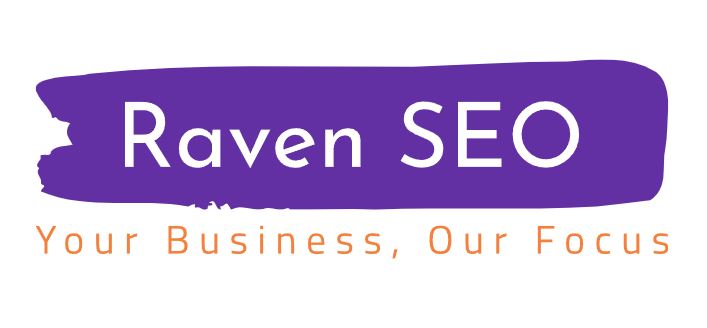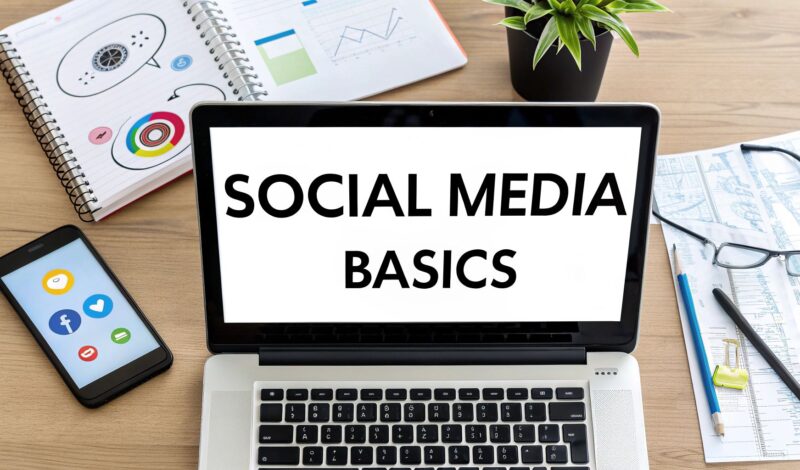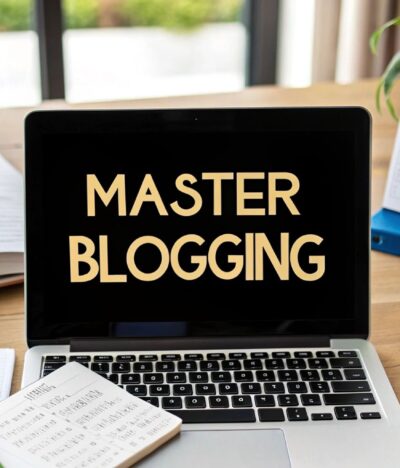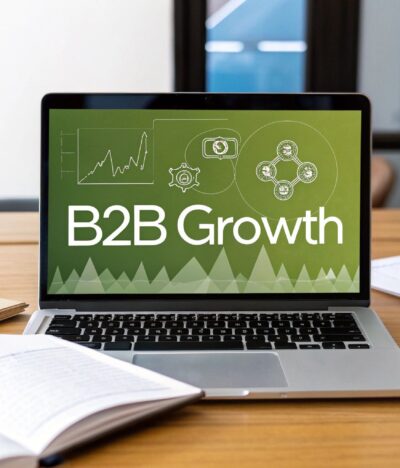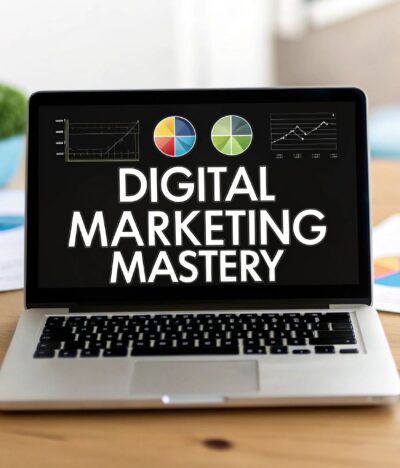At its most basic, social media marketing is all about using platforms like Instagram and TikTok to connect with people, build up your brand, and hit your business goals. It’s less about shouting ads into the void and more about throwing a great party. The idea is to create an environment where people can make genuine human connections—with you and with each other. The whole point is to create value, not just noise.
What Exactly Is Social Media Marketing?

When you strip it all down, social media marketing is the art of using these platforms to build real relationships—the kind that turns a casual follower into a true fan of your brand. Instead of just pushing your products, the real goal is to build a community where people feel like you actually get them.
This means you’re sharing stuff they find useful, helping them solve problems, and actually listening and talking back. It’s all built on a foundation of trust and being authentic.
Why It Matters Now More Than Ever
The sheer scale of social media is staggering. As of 2025, we’re looking at 5.45 billion users across the globe. The average person sinks 2 hours and 24 minutes into these apps every single day.
And they’re not just scrolling through cat videos. A significant chunk of users are actively looking for things to buy. We’re talking 26.6% getting buying inspiration and 25.9% searching directly for products. This has completely woven social media into how people shop today. If you want to dive deeper, you can explore more social media statistics and trends that show its full impact.
The purpose of social media is to foster tighter bonds with your target audience, establish your brand as a thought leader, increase brand awareness, and ultimately, sell your product or service.
By putting connection before conversion, you build a loyal base that doesn’t just buy from you—they tell their friends about you. That’s the bedrock of any social media strategy that’s built to last.
Choosing the Right Platforms for Your Brand
Jumping into social media marketing can feel like trying to be in ten places at once. The good news? You don’t have to be. The real secret to success isn’t being everywhere; it’s being where your ideal customers are already spending their time.
Think of each platform as a different type of party. LinkedIn is a professional networking event, perfect for B2B brands sharing industry insights. Instagram is more like a vibrant art gallery where stunning visuals and creative storytelling steal the show. And TikTok? That’s a fast-paced, trend-driven talent show, made for brands that can create fun, bite-sized videos.
To help you decide where to focus your efforts, this table breaks down the biggest players.
Major Social Media Platforms at a Glance
| Platform | Primary Audience | Best For | Content Focus |
|---|---|---|---|
| Broad (Gen X & Millennials) | Community building, brand awareness, ads | Varied: video, images, text, links | |
| Millennials & Gen Z | Visual branding, influencer marketing, e-commerce | High-quality photos, Stories, Reels | |
| X (Twitter) | Millennials & Professionals | Real-time updates, news, customer service | Short text, links, memes, video clips |
| B2B Professionals & Job Seekers | Professional networking, B2B lead generation | Articles, industry news, career content | |
| TikTok | Gen Z & Young Millennials | Viral trends, short-form video, entertainment | Short, engaging videos with music & effects |
| Predominantly Female Millennials | Driving traffic, inspiration, product discovery | High-quality images (infographics, tutorials) |
This is just a starting point, but it shows how different each platform’s environment really is. Your job is to find the best fit for your brand’s voice and goals.
Understand the Platform Demographics
Your target audience should be the north star of your decision. You need a crystal-clear picture of who you’re trying to reach and where they hang out online.
For example, if your brand is all about connecting with Gen Z, platforms like TikTok and Instagram are non-negotiable. But if your ideal customer is a professional in their 30s or 40s, you’ll probably get more traction on LinkedIn. Getting this right is what separates a focused, high-impact strategy from just shouting into the void.
This chart breaks down the general age distribution of social media users, giving you a sense of where the largest segments are.
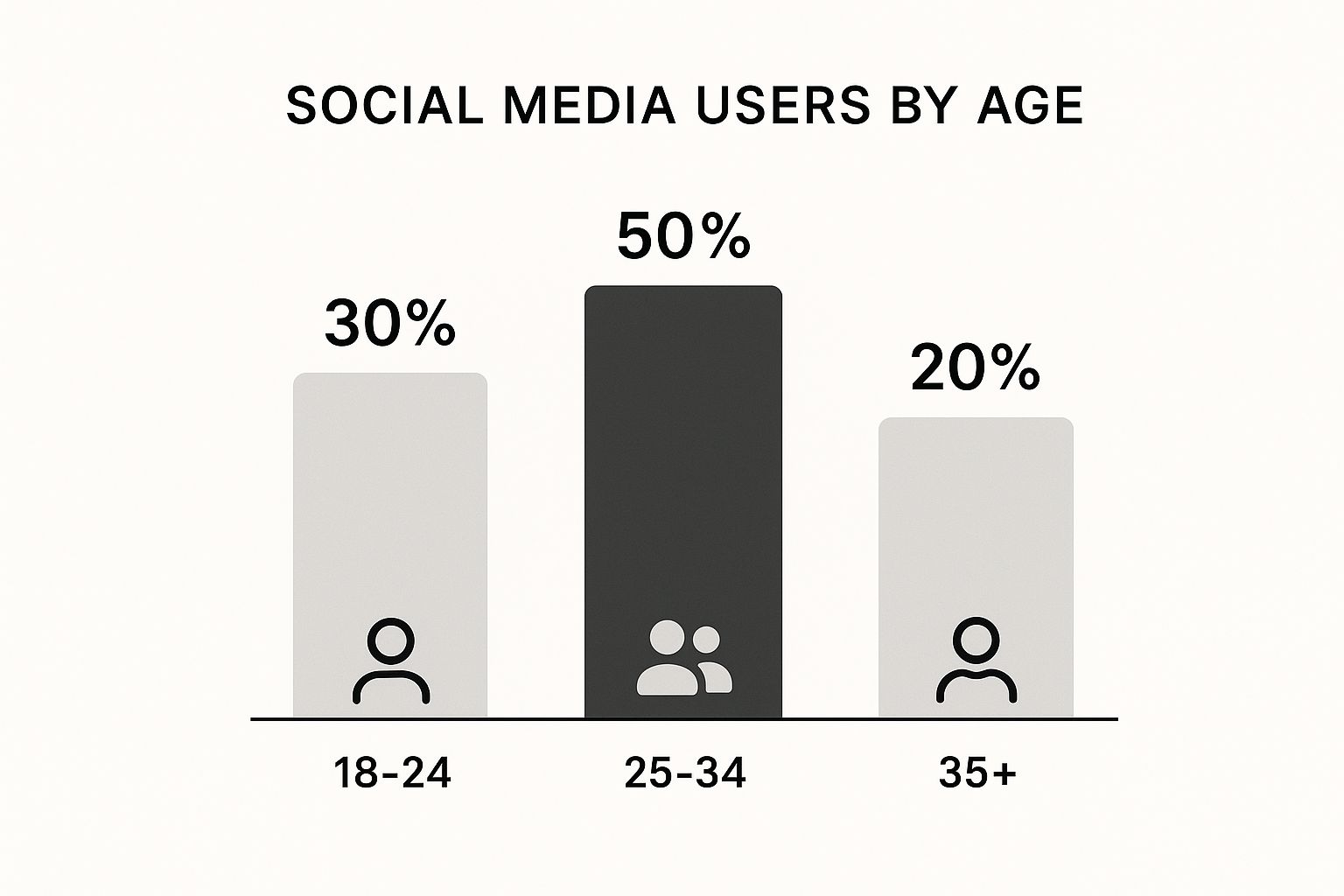
The data clearly shows that the 25–34 age group represents the largest user base at 50%, making platforms popular with them a strategic starting point for many brands.
Choosing a platform also means committing to its content style. Short-form video is king on TikTok, where trends can explode overnight. The ongoing discussions around its future also show how quickly things can change, and you can explore what a potential TikTok ban means for social media marketing to see why staying adaptable is so important.
My best advice? Start small. Pick one or two platforms where you can confidently create great content that feels native to the space. Once you build momentum and learn what your audience loves, you can strategically branch out from there.
Building Your Foundational Social Media Strategy

A powerful social media presence doesn’t happen by accident; it’s always the result of a solid, well-thought-out strategy. Think of your strategy as the blueprint for a house. Without one, you’re just nailing boards together and hoping it doesn’t fall down. But with a clear plan, every action has a purpose and helps build something that lasts.
Your strategy is the roadmap that guides every post, reply, and campaign you run. It’s what stops you from just posting randomly and hoping for the best, making sure all your hard work actually ties back to your business goals. For a deeper dive, check out this guide on how to create a social media strategy from the ground up.
Setting Goals That Actually Work
Let’s be honest: vague goals like “get more followers” are the marketing equivalent of a road trip with no destination. You’ll burn a lot of gas but won’t get anywhere meaningful. To make real progress, your goals need to be SMART: Specific, Measurable, Achievable, Relevant, and Time-bound. This simple framework turns fuzzy wishes into real targets.
Instead of just aiming for “better engagement,” a SMART goal sounds more like this: “Increase Instagram Story replies by 20% within the next quarter by using interactive polls and Q&A stickers three times per week.”
See the difference? That level of clarity gives you a finish line. You know exactly what to do and how you’ll measure whether you got there, which is the cornerstone of any effective plan.
Know Who You Are Talking To
You wouldn’t give the same speech at a tech conference that you would at a family barbecue, right? The same goes for your social media content—it has to be tailored to a specific audience to land well. This is where creating a detailed audience persona is a game-changer. Think of it as a fictional character who represents your ideal customer, built from real data and research.
Give this persona a name, a job, and a personality. What are their biggest headaches? What makes them laugh? What problems are they trying to solve that you can help with? This detailed picture helps you create content that speaks directly to them, not just at them. Our guide on the 5 essential steps to kickstart your social media presence offers more great tips for defining your audience.
Once you have clear goals and a deep understanding of your audience, you can finally build a content plan that actually connects. This includes establishing a consistent brand voice—whether you’re witty, professional, or inspirational—that helps build recognition and trust with every single post.
Creating Content That Genuinely Connects
On social media, your content is everything. It’s what grabs attention, sparks conversation, and ultimately builds your brand. The trick is to stop thinking like a salesperson and start thinking about how you can genuinely serve your audience.
Think of it like planning a well-balanced meal for a friend—you can’t just serve dessert. A good content strategy mixes things up, keeping your followers engaged and preventing them from getting bored with endless sales pitches.
Embrace the 80/20 Rule
A great framework to follow is the 80/20 rule. The idea is simple: devote 80% of your content to posts that educate, entertain, or inspire your audience. The other 20% is for directly promoting what you sell.
This strategy is powerful because it builds trust. You become a go-to resource, not just another company trying to make a sale. So when you do post something promotional, people are far more likely to listen because you’ve already given them so much value.
By focusing on value-driven content first, you earn the right to promote your business. This simple shift in perspective is a cornerstone of effective social media marketing.
Harness the Power of Different Formats
Mixing up your content formats is crucial for keeping your feed feeling fresh and interesting. Different people prefer different types of content, and the platform algorithms love variety. For instance, video is still king when it comes to grabbing eyeballs—a whopping 78% of people prefer learning about new products through short videos. This is why 93% of marketers are planning to up their social media spend, focusing on creating quality interactions over just chasing big numbers. You can discover more social media statistics and insights to keep up with the latest trends.
Try weaving a mix of these formats into your plan:
- Short-Form Videos (Reels/TikToks): These are perfect for showing off your brand’s personality, hopping on trends, and stopping the scroll. With AI tools changing how videos are made, it’s also smart to keep an eye on platform policies, like YouTube’s AI transparency push for creators.
- Interactive Stories: Get people involved directly with polls, quizzes, and Q&A sessions. It’s a fantastic way to get instant feedback and make your audience feel heard.
- Informative Carousels: Got a complex idea? Break it down into a series of digestible slides. These are great for how-to guides, checklists, or sharing quick tips.
- User-Generated Content (UGC): Sharing posts from your actual customers is one of the most powerful things you can do. It’s authentic social proof that shows you have a real, thriving community.
How to Measure Your Social Media Success

You can’t improve what you don’t measure. Diving into your social media analytics is how you turn a jumble of numbers into a clear story about what’s actually working for your brand. The trick is to look past vanity numbers like follower counts and zero in on the data that connects back to your business goals.
Think of analytics as your strategy’s compass. It shows you if you’re on the right path or if you need to make a course correction. To get a real sense of your performance, you have to measure social media impact in a way that truly matters.
Key Metrics You Must Track
The easiest way to make sense of all the data is to group your metrics into three core categories. This simple framework helps you see exactly how your social media activity is paying off.
- Reach: This is your starting point. It tells you how many unique sets of eyeballs are seeing your content, which is the bedrock of building brand awareness.
- Engagement: This is where the magic happens. Likes, comments, shares, and saves all show you how people are reacting to your content. High engagement is a clear sign that you’re hitting the mark.
- Conversions: This is the bottom line. It tracks the actions you actually want people to take, like clicking through to your website, signing up for your newsletter, or making a purchase.
Relying on this kind of data isn’t just a good idea anymore; it’s essential. Marketers who use real-time data see a return on investment that is 5 to 8 times higher than those who are just guessing. This shift toward authentic connection also explains why user-generated content gets nearly nine times more engagement than typical branded posts—people crave realness.
By consistently tracking these key performance indicators (KPIs), you can confidently refine your strategy based on solid evidence, ensuring your social media efforts directly contribute to tangible business growth.
Your Top Social Media Questions, Answered
Jumping into social media for your business can feel like you’re trying to drink from a firehose. How much should I spend? How often should I post? What tools do I even need? It’s easy to get overwhelmed.
Let’s cut through the noise. Here are some straightforward answers to the questions we hear most often from people just getting started.
How Much Should a Beginner Budget for Social Media?
This is the big one, right? The good news is you don’t need a massive budget to make an impact. In fact, it’s smarter to start small. Many businesses see great results by starting with just $10-$20 per day on a single platform.
Think of this initial spend less as a budget and more as “tuition.” You’re paying to learn what your audience actually responds to. Your first priority should always be creating fantastic, genuinely helpful content for free (organic) growth. Once you see a post taking off on its own, that’s when you put a little ad money behind it to show it to more people.
How Often Should I Be Posting on Social Media?
Forget what you’ve heard about posting multiple times a day. When it comes to social media, consistency beats frequency every single time. It’s far better to share three amazing, well-thought-out posts a week than to spam your followers with seven rushed, forgettable ones.
Your audience can spot low-effort content from a mile away, and trying to keep up with an aggressive schedule is a fast track to burnout. For most businesses on platforms like Instagram or Facebook, posting 3-5 times per week is a perfect starting point. It’s a rhythm you can actually stick with.
The goal is to find a sustainable pace that doesn’t compromise quality. Keep an eye on your analytics. If you try posting more and your engagement goes down, that’s a clear sign you’re overwhelming your audience.
What Are the Best Free Social Media Tools for a Beginner?
You absolutely do not need to pay for a bunch of fancy software to get going. There are some incredible free tools out there that can help you manage your accounts like a pro.
Here are a few essentials you should check out:
- For Making Graphics: Canva is a game-changer. It makes it ridiculously easy to create professional-looking images, quick videos, and other visuals, even if you have zero design skills.
- For Scheduling Posts: To stay consistent, you need a scheduler. Buffer and Later both have fantastic free plans that let you plan and schedule your content ahead of time.
- For Tracking Your Performance: Don’t forget the tools already built into the platforms! Meta Business Suite (for Facebook and Instagram) and the native TikTok Analytics give you a goldmine of free data about who your audience is and what they love.
Ready to take these basics and build a real strategy that gets you noticed? The team at Raven SEO lives and breathes this stuff. We build and run social media campaigns that don’t just get likes—they drive business. Get a practical roadmap for your business today.
